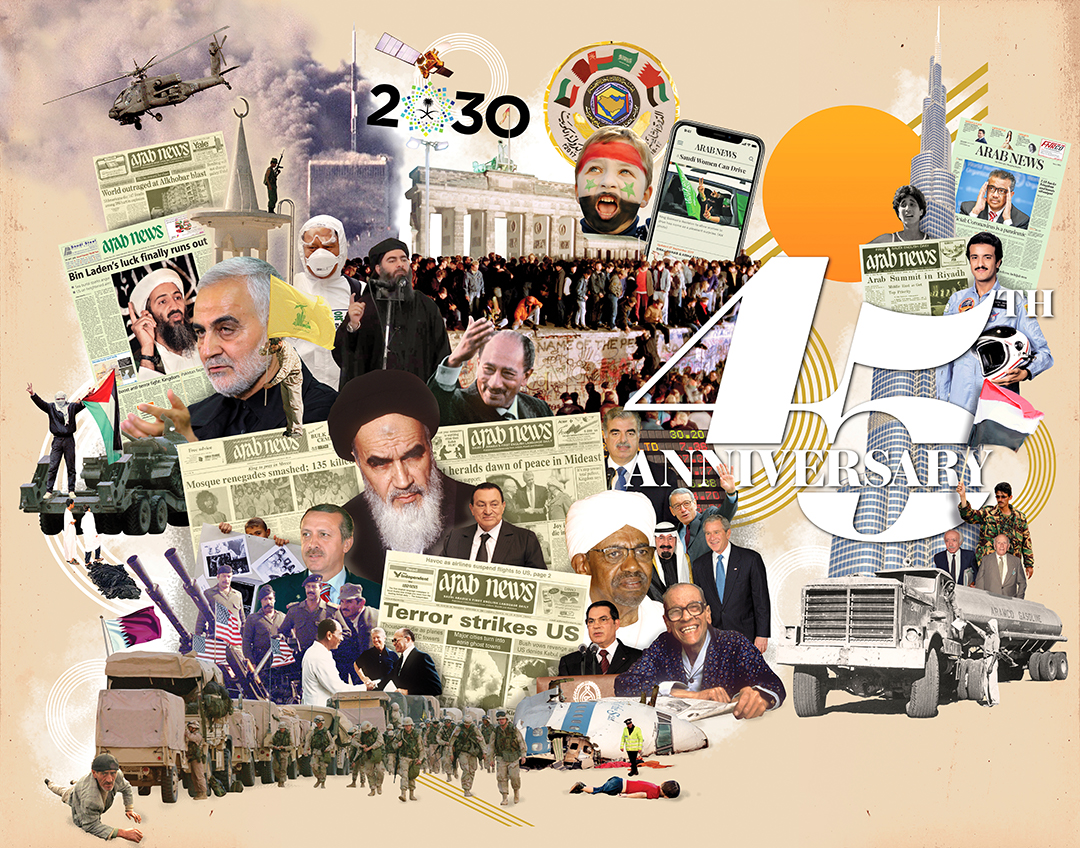Tunisia’s uprising began after a young merchant, Mohamed Bouazizi, set himself on fire in protest.
Summary
On Dec. 17, 2010, Tunisian street vendor Mohamed Bouazizi, protesting at police harassment, bribery and corruption, set himself on fire outside the governor’s office in the city of Sidi Bouzid, unwittingly igniting the multinational protest movement that would become known as the Arab Spring.
The callous treatment of Bouazizi struck a chord with millions of Tunisians, tired of living under an autocratic, corrupt regime. Even as doctors fought in vain to save Bouazizi’s life, protests flared in Sidi Bouzid and soon spread to the rest of the country.
Bouazizi died 18 days later. By then he had become “the hero of Tunisia,” a symbol of revolt inspiring violent protests in a dozen countries across the region, leading to regime change in Tunisia, Egypt and Libya and a bloody revolution that continues to divide Syria to this day.
LONDON: According to his family, Mohamed Bouazizi had suffered at the hands of overzealous officials for years. On Dec. 17, 2010, however, it took less than two hours for a sequence of events to unfold that would change the world.
As he did every day, Bouazizi, a 26-year-old fruit and vegetable seller, dragged his cart of produce along the unpaved roads into the center of Sidi Bouzid.
Key Dates
-
1
Street vendor Mohamed Bouazizi, 26, sets himself on fire.
-
2
President Zine El-Abidine Ben Ali visits Bouazizi in hospital.

-
3
Bouazizi dies at the age of 26.

-
4
Thousands attend Bouazizi’s funeral, many vowing to avenge his death.

-
5
President Ben Ali flees into exile in Saudi Arabia.

-
6
Mohamed Moncef Marzouki becomes Tunisia’s first elected president.

-
7
Tunisian court sentences Ben Ali in absentia to life imprisonment on charges of inciting violence and murder.
-
8
Ben Ali dies in exile in Jeddah, aged 83.

The nondescript provincial town in central Tunisia was typical of the area, with unemployment high among young men and opportunities to make a decent living scarce.
The exact details of what happened next are disputed. Bouazizi’s family say that at about 10:30 a.m. he was approached by municipal inspectors who requested a bribe. When he refused, a female inspector, Faida Hamdy, slapped him in the face and confiscated his electronic scales and produce.
Hamdy later denied that she had lashed out. Instead, she claimed, she was merely enforcing the law that stated market traders were not allowed to sell their goods in a public place.

A page from the Arab News archive from Jan. 11, 2011.
Furious and humiliated, Bouazizi stormed off to the municipal office where his fellow traders say that he was beaten again. Undeterred, he made his way to the main regional government building and demanded to speak to the governor.
His request was refused and within an hour of the original confrontation he returned, doused himself in paint thinner and once again demanded to meet the official.
It took just the flick of a lighter for Bouazizi to envelop himself in a ball of fire and unwittingly ignite a series of protests and uprisings across the region that became the Arab Spring. In places such as Syria and Libya, the devastating conflicts that followed are still raging today.
Bouazizi’s actions immediately flicked a switch in Sidi Bouzid, and by the time of his death 18 days later on Jan. 4, the protests had spread across the country.
Despite the rapid escalation, it took time for the potential implications of what had happened to fully register in the media. The first front-page mention in Arab News of the protests in Tunisia was in a report on food riots in Algeria that ran on Jan. 7. On Jan. 14, the newspaper led with the headline “Rioting spreads in Tunisia” — the same day that the president, Zine El-Abidine Ben Ali, fled the country after 23 years in power.

“In the capital Tunis, police opened fire on demonstrators killing at least one person as weeks of anti-government protests intensified.”
From an AFP story on Arab News’ front page, Jan. 14, 2011
On the busy foreign desk of the newspaper where I worked in Abu Dhabi, we were unsure of how much of a challenge the rampant anger would pose to the autocratic rulers.
Even with the speed of Ben Ali’s downfall, and as the protests spread beyond Tunisia’s borders, could this really lead to a domino effect, toppling the men who had run much of the Middle East for decades?
Tunisia not only lit the touch paper, it showed to the frustrated and disaffected youth across the region that change was not only real, but could happen quickly.
That it was a young man, supposedly well educated, who had been driven to such a desperate act by his hopeless situation only served to present Tunisia’s uprising as a model for others across the Arab world.
Within a year, the leaders of Egypt and Libya had been overthrown, and Yemen’s ruler was soon to stand aside. But the bloodshed from these subsequent uprisings and the brutal responses to the protests dwarfed what had unfolded in Tunisia. Nowhere was this more the case than in Syria, where Bashar Assad’s security forces turned their guns on protests and unleashed the horrors of the civil war and the extremist forces that emerged from it.
That said, Tunisia suffered its own share of violence, with more than 300 people killed in the protests. The country is held up in the West as the only one to have made progress toward democracy. Two sets of presidential and parliamentary elections have taken place since the uprising, despite some bitter political disputes that at times spilled over into violence.
Many Tunisians question whether they are better off than they were in 2010. The economy has struggled to pick up and the public have carried the burden of tough economic measures attached to a $2.8 billion loan package from the International Monetary Fund (IMF). In 2018, widespread protests against increased costs took place across the country.
Tunisia has also suffered from a series of extremist attacks, including one near the US embassy in March and another on a tourist resort in 2015 that killed 38 people and dealt a major blow to a key industry.
Much of the social and economic conditions that are so often referenced among the causes of the Arab Spring remain in Tunisia. Unemployment is even higher nationally — 15 percent compared to 12 percent before the uprising and 30 percent in the poorest areas.
Early reporting of Bouazizi’s self-immolation described him as a university graduate, something that was often repeated and fitted neatly with the narrative of the Arab Spring being driven by an overeducated and underemployed youth.
The truth was that he had dropped out of school as he became the main breadwinner for his extended family after his father died. His aspiration, his family said, was to own a van to help him grow his business.
That aspiration disappeared in the flames that ended his life, but allowed the anger felt toward Ben Ali’s corrupt and oppressive regime to overspill.
For the Arab world, Bouazizi’s extreme and individual action will forever be remembered as the moment that unleashed the anger of the many.
- Jonathan Lessware is Arab News’ London bureau digital editor and the former foreign editor of The National. He worked in the Middle East for 10 years, during the time of the Arab Spring.














